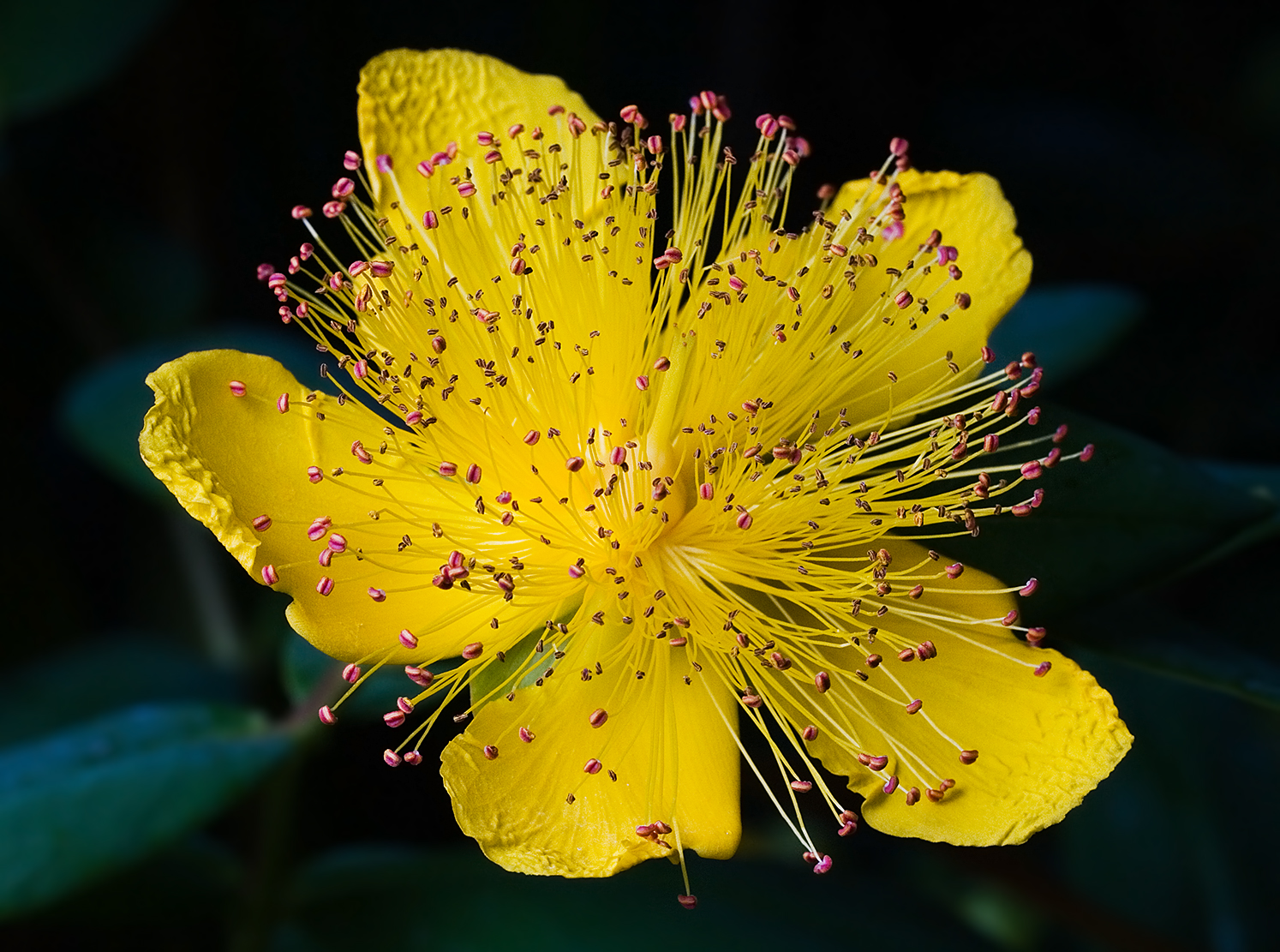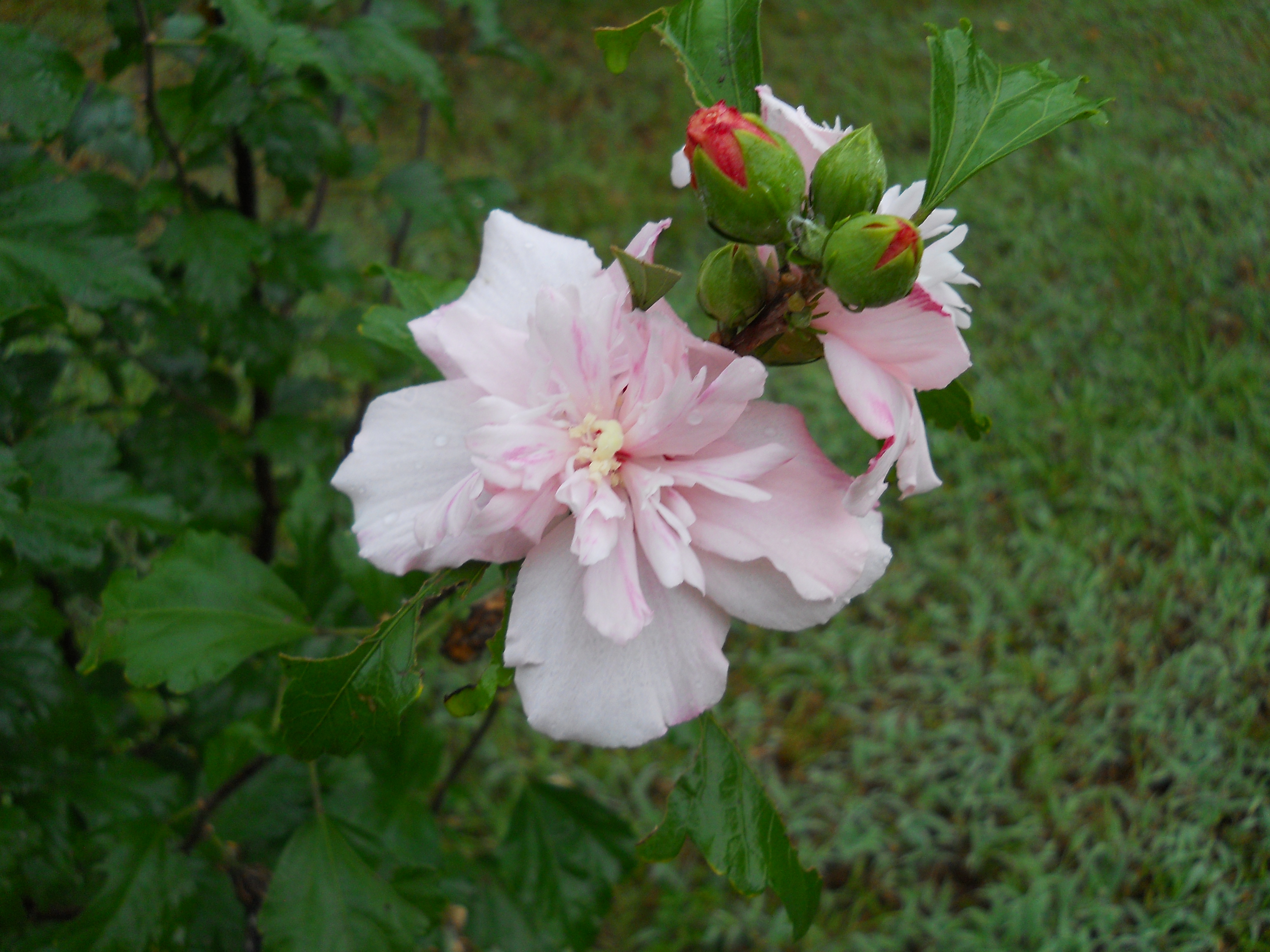Rose of Sharon on:
[Wikipedia]
[Google]
[Amazon]
 Rose of Sharon is a
Rose of Sharon is a
name
A name is a term used for identification by an external observer. They can identify a class or category of things, or a single thing, either uniquely, or within a given context. The entity identified by a name is called its referent. A personal ...
that has been applied to several different species of flowering plant
Flowering plants are plants that bear flowers and fruits, and form the clade Angiospermae (), commonly called angiosperms. The term "angiosperm" is derived from the Greek words ('container, vessel') and ('seed'), and refers to those plants th ...
s that are valued in different parts of the world. It is also a biblical
The Bible (from Koine Greek , , 'the books') is a collection of religious texts or scriptures that are held to be sacred in Christianity, Judaism, Samaritanism, and many other religions. The Bible is an anthologya compilation of texts of a ...
expression, though the identity of the plant referred to is unclear and is disputed among biblical scholars. In neither case does it refer to actual rose
A rose is either a woody perennial flowering plant of the genus ''Rosa'' (), in the family Rosaceae (), or the flower it bears. There are over three hundred species and tens of thousands of cultivars. They form a group of plants that can be ...
s, although one of the species it refers to in modern usage is a member of Rosaceae
Rosaceae (), the rose family, is a medium-sized family of flowering plants that includes 4,828 known species in 91 genera.
The name is derived from the type genus ''Rosa''. Among the most species-rich genera are ''Alchemilla'' (270), ''Sorbus ...
. The deciduous flowering shrub known as the rose of Sharon is a member of the mallow family which is distinct from the family Rosaceae. The name's colloquial application has been used as an example of the lack of precision of common name
In biology, a common name of a taxon or organism (also known as a vernacular name, English name, colloquial name, country name, popular name, or farmer's name) is a name that is based on the normal language of everyday life; and is often contrast ...
s, which can potentially cause confusion. "Rose of Sharon" has become a frequently used catch phrase
A catchphrase (alternatively spelled catch phrase) is a phrase or expression recognized by its repeated utterance. Such phrases often originate in popular culture and in the arts, and typically spread through word of mouth and a variety of mass ...
in poetry and lyrics.
Biblical origins
The name "Rose of Sharon" first appears in Hebrew in theTanakh
The Hebrew Bible or Tanakh (;"Tanach"
''
''
Shir Hashirim ( 'Song of Songs' or 'Song of Solomon') 2:1, the speaker (the beloved) says "I am the rose of Sharon, a rose of the valley". The Hebrew phrase (''ḥăḇatzeleṯ hasharon'') was translated by the editors of the King James version of the Bible as "rose of Sharon"; however, previous translations had rendered it simply as "the flower of the field" (



 The name "rose of Sharon" is also commonly applied to several plants, all originating outside the
The name "rose of Sharon" is also commonly applied to several plants, all originating outside the
Septuagint
The Greek Old Testament, or Septuagint (, ; from the la, septuaginta, lit=seventy; often abbreviated ''70''; in Roman numerals, LXX), is the earliest extant Greek translation of books from the Hebrew Bible. It includes several books beyond th ...
"'", Vulgate
The Vulgate (; also called (Bible in common tongue), ) is a late-4th-century Latin translation of the Bible.
The Vulgate is largely the work of Jerome who, in 382, had been commissioned by Pope Damasus I to revise the Gospels u ...
"'", Wycliffe "a flower of the field"). Contrariwise, the Hebrew word ''ḥăḇatzeleṯ'' occurs two times in the scriptures: in the Song, and in Isaiah 35:1, which reads, "the desert shall bloom like the rose." The word is translated "rose" in the King James version, but is rendered variously as "lily" (Septuagint "'", Vulgate "'", Wycliffe "lily"), "jonquil" (Jerusalem Bible
''The Jerusalem Bible'' (JB or TJB) is an English translation of the Bible published in 1966 by Darton, Longman & Todd. As a Catholic Bible, it includes 73 books: the 39 books shared with the Hebrew Bible, along with the seven deuterocanonica ...
) and "crocus" (RSV RSV may refer to:
Biology and medicine
* Respiratory syncytial virus, causing respiratory disease
* Rous sarcoma virus, causing cancer in chickens
Road vehicles
* Several :Aprilia motorcycles, Aprilia motorcycles, e.g.RSV4
* Minicar RSV, a US saf ...
).
Varying scholars have suggested that the biblical "rose of Sharon" may be one of the following plants:
*A crocus: "a kind of crocus growing as a lily among the brambles" ("Sharon", ''Harper's Bible Dictionary
''Harper's Bible Dictionary'' is a scholarly reference book of the Bible, containing the texts of the Old Testament, the Apocrypha, and the New Testament. It is written by 180 members of the Society of Biblical Literature, edited by Paul J. Ac ...
'') or a crocus that grows in the coastal plain of Sharon
The Sharon plain ( ''HaSharon Arabic: سهل شارون Sahel Sharon'') is the central section of the Israeli coastal plain. The plain lies between the Mediterranean Sea to the west and the Samarian Hills, to the east. It stretches from Nahal T ...
('' New Oxford Annotated Bible'');
*A tulip: "a bright red tulip-like flower ... today prolific in the hills of Sharon" "rose", ''Harper's Bible Dictionary'');
**'' Tulipa agenensis'', the Sharon tulip, a species of tulip suggested by a few botanists or
**'' Tulipa montana''
*A lily: ''Lilium candidum
''Lilium candidum'', the Madonna lily or white lily, is a plant in the Lilium, true lily family. It is native to the Balkans and Middle East, and naturalized in other parts of Europe, including France, Italy, and Ukraine, and in North Africa, the ...
'', more commonly known as the Madonna lily, a species of lily suggested by some botanists, though likely in reference to the lilies of the valley mentioned in the second part of Song of Solomon 2:1.
* Narcissus ("rose", ''Cyclopaedia of Biblical, Theological and Ecclesiastical Literature
Cyclopedia, cyclopaedia or cyclopedien is an archaic term for encyclopedia.
The term may specifically refer to:
*''Cyclopædia, or an Universal Dictionary of Arts and Sciences'', 1728, edited by Ephraim Chambers
*''Rees's Cyclopædia'', 1802� ...
'')
According to an annotation of ''Song of Solomon'' 2:1 by the translation committee of the New Revised Standard Version
The New Revised Standard Version (NRSV) is an English translation of the Bible published in 1989 by the National Council of Churches.crocus
''Crocus'' (; plural: crocuses or croci) is a genus of seasonal flowering plants in the family Iridaceae (iris family) comprising about 100 species of perennials growing from corms. They are low growing plants, whose flower stems remain under ...
.
Etymologists have tentatively linked the biblical to the words ''beṣel'', meaning 'bulb', and ''ḥāmaṣ'', which is understood as meaning either 'pungent' or 'splendid' ( ''The Analytical Hebrew and Chaldee Lexicon'').
A possible interpretation for the biblical reference is ''Pancratium maritimum
''Pancratium maritimum'', or sea daffodil, is a species of bulbous plant native to the Canary Islands and both sides of the Mediterranean region and Black Sea from Portugal, Morocco and the Balearic Islands east to Turkey, Syria, Israel and t ...
'', which blooms in the late summer just above the high-tide mark. The modern Hebrew
Modern Hebrew ( he, עברית חדשה, ''ʿivrít ḥadašá ', , '' lit.'' "Modern Hebrew" or "New Hebrew"), also known as Israeli Hebrew or Israeli, and generally referred to by speakers simply as Hebrew ( ), is the standard form of the He ...
name for this flower is or (''ḥăḇaṣṣeleṯ'' or ''habasselet ha-khof'', coastal lily). Some identify this flower with the "rose of Sharon" mentioned in the Song of Songs, but not all scholars accept this.
Recently, some scholars have translated ''ḥăḇaṣṣeleṯ'' as "a budding bulb" in consideration of the genealogical research of multilingual versions and lexicons.
Modern usage


 The name "rose of Sharon" is also commonly applied to several plants, all originating outside the
The name "rose of Sharon" is also commonly applied to several plants, all originating outside the Levant
The Levant () is an approximate historical geographical term referring to a large area in the Eastern Mediterranean region of Western Asia. In its narrowest sense, which is in use today in archaeology and other cultural contexts, it is eq ...
and not likely to have been the plant from the Bible:
*'' Hypericum calycinum'' (also called Aaron's beard due to its net-veined underside and numerous yellow stamens), an evergreen flowering shrub native to southeast Europe and southwest Asia
*''Hibiscus syriacus
''Hibiscus syriacus'' is a species of flowering plant in the mallow family, Malvaceae. It is native to Korea, and south-central and southeast China, but widely introduced elsewhere, including much of Asia. It was given the epithet ''syriacus'' b ...
'', a deciduous flowering shrub native to east Asia, and the national flower of South Korea
South Korea, officially the Republic of Korea (ROK), is a country in East Asia, constituting the southern part of the Korea, Korean Peninsula and sharing a Korean Demilitarized Zone, land border with North Korea. Its western border is formed ...
(also known as "Mugunghwa" and "Althea")
*''Hibiscus rosa-sinensis
''Hibiscus rosa-sinensis'', known colloquially as Chinese hibiscus, China rose, Hawaiian hibiscus, rose mallow and shoeblack plant, is a species of tropical hibiscus, a flowering plant in the Hibisceae Tribe (biology), tribe of the family (biol ...
'' (var. 'Vulcan'), the national flower of Malaysia
Malaysia ( ; ) is a country in Southeast Asia. The federation, federal constitutional monarchy consists of States and federal territories of Malaysia, thirteen states and three federal territories, separated by the South China Sea into two r ...
The term is also applied to varieties of iris
Iris most often refers to:
*Iris (anatomy), part of the eye
*Iris (mythology), a Greek goddess
* ''Iris'' (plant), a genus of flowering plants
* Iris (color), an ambiguous color term
Iris or IRIS may also refer to:
Arts and media
Fictional ent ...
, ''Malus domestica
An apple is an edible fruit produced by an apple tree (''Malus domestica''). Apple trees are cultivated worldwide and are the most widely grown species in the genus ''Malus''. The tree originated in Central Asia, where its wild ancestor, ' ...
'' and ''Paeonia lactiflora
''Paeonia lactiflora'' (Chinese peony, Chinese herbaceous peony, or common garden peony) is a species of herbaceous perennial flowering plant in the family Paeoniaceae, native to central and eastern Asia from eastern Tibet across northern Chi ...
''.
References
Sources
* * * * *{{cite book, ref={{harvid, Yu, 2008, last1=Yu, first1=Myŏng-jong, last2=Lee, first2=Ji-Hye, last3=Chŏn, first3=Sŏng-yŏng, title=100 Cultural Symbols of Korea: 100 windows showcasing Korea, date=2008, publisher=Discovery Media, location=431, King’s Garden Office Hotel 3rd Complex, 72 Naesoo-dong, Jongno-gu, Seoul, Korea, edition=First Plant common names Biblical phrases Plants in the Bible